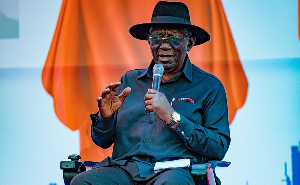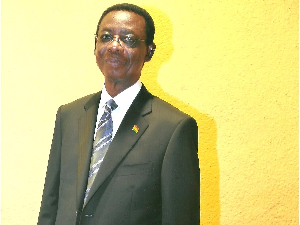A renowned Ghanaian economist at the University of Cape Coast, Professor John Gatsi has asked managers of Ghana’s economy to open up on the country’s debt stock.
According to him, at the end of December 2017 the debt stock of Ghana stood at GH¢142.5 billion which reflected a debt to GDP ratio of 70.5% as reported in the recent IMF – Ghana Government Review of the
Extended Credit Facility (ECF) Program.
“The debt stock by February 2018 stood at GH¢145 billion which implies an increase of GH¢2.5 billion since December 2017”.
Paragraph 7 of the recent press statement of the Monetary Policy Committee (MPC) of the Bank of Ghana highlighted: “The total public debt declined from 69.8 percent of GDP (GH¢142.5 billion) at the end of 2017 to 60.0 percent of GDP (GH¢145.0 billion) at the end of February 2018, reflecting a higher GDP base. Of the total, domestic debt was GH¢68.2 billion (47.0% of total debt) and external debt was GH¢76.8 billion (53.0% of total debt)”
So what happened to the size of the economy to reflect a debt to GDP ratio of 60 %, Prof Gatsi questioned.
He continued: “Since we do not generate these figures it is only proper to ask for clarification. While waiting for the explanations, we can remind ourselves of the dangers inherent in comparing actual and current debt figures (at least up to February 2018) with projected GDP figure bearing in mind that 60% debt to GDP ratio means February 2018 GDP figure should be GH¢242 billion”.
The economic data published by IMF shows approximately GH¢242 billion for the entire 2018.
Prof Gatsi added: “Some clarification will help the public, especially when both the numerator (Debt)and denominator (GDP)are increasing. It is, however, clear that whether or not the debt to GDP ratio is 60%, from end of year, 2016 to February 2018, the debt stock increased by approximately GH¢22.8 billion and repayment burden remains critical”.
Warning
The World Bank warned that 18 sub-Saharan African countries are at “high risk of debt distress” in 2018 compared with just eight five years ago.
The World Bank’s Pulse Africa report revealed that Ghana is among the 18 countries where government debt is above 50 per cent of GDP.
The bank also expressed concern that tax receipts are not meeting the cost of debt repayments in Ghana and several African countries. It further warned that the consequences may be severe if action is not taken to address the issue in the coming years.
This is because from 2021 international bonds start maturing and large repayments pose “significant refinancing risks” to the region, according to the bank.
Public debt rising
Across the sub-Saharan African region, public debt relative to GDP is rising, and the composition of debt has changed, as countries have shifted away from traditional concessional sources of financing toward more market-based ones especially the eurobonds.
Higher debt burdens and the increasing exposure to market risks raise concerns about debt sustainability: 18 countries were classified at high-risk of debt distress in March 2018, compared with eight in 2013.
From 2013, the dynamics and composition of public debt changed significantly. Public debt increased from an average of 37 per cent of GDP in 2012 to 56 per cent in 2016, with more than two-thirds of the countries experiencing an increase of more than 20 percentage points.
Debt sustainability risks in the region “have increased significantly” over the past few years, the report noted.
“Higher debt burdens and the increasing exposure to market risks raise concerns about debt sustainability,” the report said.
The report is, however, more optimistic about economic growth across the region which is projected to reach 3.1 percent in 2018, and to average 3.6 percent in 2019–20.
Growth
The value of goods and services produced in Ghana has increased from 3.6% in 2016, to 8.5% in 2017, and it is expected to grow further this year. The country’s oil and gas sector contributed hugely to the 2017 growth.
This growth is not inclusive. It is skewed and noninclusive in favour of the natural resource sector which does not provide the benefit of economic growth to citizens.
Business News of Sunday, 3 June 2018
Source: africaneyereport.com
Open up on debt stock – Prof. Gatsi to government
Entertainment












